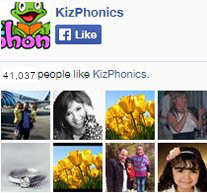Afterschool Programming for Kids: Igniting a Passion for Coding
In today's digital age, where technology is an integral part of our daily lives, introducing children to programming and coding from a young age has become increasingly important. Afterschool programming offers an exciting opportunity to empower kids with essential skills that not only enhance their problem-solving abilities but also prepare them for the future. This article delves into what afterschool programming for kids is all about, how to get children interested in programming and coding, and the multitude of benefits it brings.
What is Afterschool Programming for Kids?
Afterschool programming for kids is a structured educational activity that takes place outside of regular school hours. It is designed to provide children with engaging learning experiences centered around programming, coding, and computational thinking. These programs are often held in schools, community centers, libraries, and online platforms, offering a safe and collaborative environment for children to explore the world of coding.
How to Get Children into Programming and Coding
Getting children interested in programming and coding requires a thoughtful and encouraging approach. Here are some effective strategies to spark their curiosity:
1. Gamified Learning:
Incorporate elements of gamification into programming lessons. Using interactive games and challenges, children can learn coding concepts while having fun.
2. Creative Projects:
Encourage kids to work on creative projects that align with their interests. Whether it's designing a simple video game, crafting animations, or building a website, hands-on projects make learning programming more exciting.
3. Visual Programming Languages:
Start with visual programming languages like Scratch, where kids can drag and drop code blocks to create animations and games. These languages make coding accessible and engaging for young learners.
4. Robotics and Hardware:
Introduce children to robotics kits and hardware projects. Building and programming robots provide a tangible way to see how code translates into real-world actions.
5. Collaborative Learning:
Promote teamwork and collaboration. Group coding activities allow children to learn from one another, share ideas, and solve problems collectively.
The Benefits of Afterschool Programming
Afterschool programming offers a plethora of advantages that contribute to a child's holistic development. Here are some of the key benefits:
1. Enhanced Problem-Solving Skills:
Programming involves breaking down complex problems into smaller, manageable parts. This process nurtures critical thinking and problem-solving skills that are applicable beyond coding.
2. Boosted Creativity:
Coding is a form of creative expression. As children experiment with code to create unique projects, they cultivate their creativity and innovation.
3. Future-Ready Skills:
In an increasingly digital world, coding has become a fundamental skill. Afterschool programming equips kids with the tools they need to excel in a technology-driven future.
4. Improved Math and Logic:
Coding requires a strong foundation in mathematical concepts and logical reasoning. Engaging with coding activities can reinforce these skills in a practical context.
5. Confidence and Persistence:
As children tackle coding challenges and witness their progress, they develop a sense of accomplishment and the perseverance to overcome obstacles.
6. Career Exploration:
Afterschool programming introduces kids to potential career paths in technology and computer science, sparking an early interest in fields that are in high demand.
7. Digital Citizenship:
Children learn about responsible technology use, online safety, and ethical considerations while participating in online coding communities.
Frequently Asked Questions about Afterschool Programming for Kids
Q1: At what age should children start afterschool programming?
A1: Afterschool programming can be tailored to various age groups. Many programs offer activities suitable for children as young as 5 or 6, using visual programming languages. As children grow, they can transition to more complex languages and projects.
Q2: Do children need prior coding experience to join an afterschool program?
A2: No, prior coding experience is not required. Afterschool programming is designed to accommodate beginners. Kids with no coding background can start with introductory activities and gradually build their skills.
Q3: How can I find a reliable afterschool programming program for my child?
A3: You can start by checking with local schools, community centers, and libraries for available programs. Online platforms also offer a wide range of options. Look for programs with positive reviews, experienced instructors, and a curriculum that aligns with your child's interests.
Q4: What equipment is needed for afterschool programming?
A4: Most afterschool programming activities can be done using a computer or tablet. Some programs may involve robotics kits or specific hardware. Check the program requirements beforehand to ensure you have the necessary equipment.
Q5: How can I support my child's interest in coding at home?
A5: Encourage your child to explore coding websites and apps. Consider learning coding together as a family, and provide resources such as books and online tutorials. Celebrate their achievements and offer assistance when they encounter challenges.
Conclusion
Afterschool programming for kids opens a world of opportunities for skill development, creativity, and future success. By introducing children to the wonders of programming and coding through engaging and interactive activities, we equip them with essential tools to navigate the digital landscape with confidence. As parents and educators, fostering an interest in afterschool programming can lay the foundation for a bright and innovative future.
To explore more about phonics education for your child, visit Kizphonics.
Remember, nurturing a passion for coding is like planting a seed that can grow into a lifelong journey of learning and exploration.











